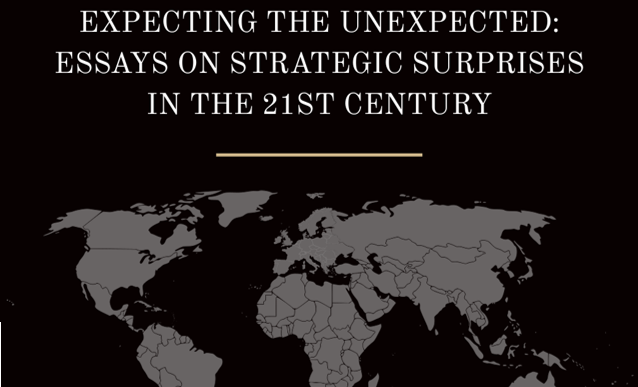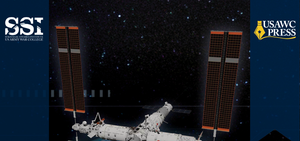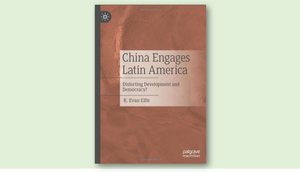
Preparing for PRC Military Actions in Latin America in the Context of a War in the Indopacific
“Preparing for PRC Military Actions in Latin America in the Context of a War in the Indopacific,” in Expecting the Unexpected: Essays on Strategic Surprise in the 21st Century (West Point, NY: Modern Warfare Institute 2025), pp. 67-77.
In assessing the character and risks presented by the activities of the People’s Republic of China (PRC) and its agents in Latin America, perspective and context are critical. The dollar volume of PRC commercial activities in the region overshadows its activities in the security domain.
With respect to the PRC commercial footprint, by 2021, bilateral PRC trade with the region had reached over $450 billion.[i] By 2023 PRC-based companies had made an estimated $193.2 billion in foreign direct investment in the region.[ii] Additionally, its two principal policy banks had lent over $120 billion to the region.[iii]
By contrast, PRC security sector activities in Latin America have been principally limited to a modest level of arms sales and gifts to militaries and police forces in the region, some professional military education and training exchanges, institutional visits, and a limited number of exercises and trips by People’s Liberation Army (PLA) Navy ships to the region.[iv] Other PRC security activities include the presence of Chinese personnel in the ELINT facility in Bejucal, Cuba, and an eight-year presence of PLA military police in the Brazilian-led MINUSTAH peacekeeping force in Haiti.[v]
Although Chinese space and technology activities in Latin America can sometimes be interpreted in a military context,[vi] governments in the region, and even the US government, may characterize PRC activities in the region as predominantly commercial in character. That does not, however, make PRC security sector activities in the region any less strategically significant.
For the US Defense Department and Intelligence Community, which have responsibilities for preparing for and fighting the nation’s wars and defending the US homeland against potential dangers, PRC activities in the Western Hemisphere must be interpreted through a lens of the threats that they potentially pose. Nonetheless, with the exception of Chinese Ministry of State Security (MSS) and other intelligence operatives and PLA personnel in Bejucal,[vii] the PRC, to date, has not deployed forces in the hemisphere overtly oriented towards posing a threat to the US. Nor has the PRC established formal military basing agreements or military alliances with the nations of the Western Hemisphere, although it has signed multiple defense cooperation agreements with them and its companies have secured agreements to operate private ports such as Chancay, in Peru, with clauses that permit some military access[viii] and/or that could be used for military purposes.
From the perspective of the two DoD Regional Combatant Commands responsible for the Western Hemisphere, US Southern Command (SOUTHCOM) and US Northern Command (NORTHCOM), the PRC may not appear to present a standing military threat in their Areas of Responsibility (AOR). Similarly, for US Indo-Pacific Command (INDOPACOM), where the prospect of war with the PRC is greatest,[ix] the relative absence of a large-scale PRC military presence in the Western Hemisphere could be misinterpreted to mean that INDOPACOM can count on mostly uninterrupted flows of US forces and sustainment to support it in the event of a conflict with the PRC. Similarly, it would suggest that INDOPACOM can assume a relatively low risk of military activities against the US there, that would require the diversion of significant US forces away from what could be provided to the Indopacific in a warfight against the PRC.
Although logical, such assumptions are likely wrong, creating the risk of “strategic surprise” from PRC military activities in the Western Hemisphere in time of a largescale conflict with the PRC in the Indopacific. That scenario of “strategic surprise” in the Western Hemisphere, and what the US and its partners in the region can do to prepare for it, is the focus of the rest of this work.
The Conflict Scenario
In analyzing the risks to the US in Latin America from a major war with the PRC in the Indopacific, this work uses the reference year 2027 for such a conflict. The timeframe is close enough to the present to permit reasonable extrapolations from current-day events, yet far enough in the future to allow for some evolution of PRC capabilities and activities and the situation in the region. Equally importantly, it also allows for the possibility that the United States can adjust its own posture to prepare for the postulated events. 2027 also coincides with the 100th anniversary of the People’s Liberation Army,[x] as well as the end of Xi Jinping’s unprecedented 3rd term, by which time the PRC President has strong motivations to end Taiwanese autonomy in order to cement his legacy alongside Mao Zedong as one of China’s most significant leaders.
For the purposes of the present analysis, it is not necessary to specify how or precisely where a war pitting the PRC against a US-led Western force might begin. It is likely that it would begin from a PRC attempt to end the autonomy of Taiwan, although such a conflict could begin over other issues, such as PRC military actions against the Philippines or other neighbors as China pressed its claims to their territorial waters in the South or East China Sea.[xi]
Whether the war occurred over Taiwan or another matter, the escalation to a major conflict would likely involve miscalculation by the PRC regarding the Western response in pressing China’s claims. Similarly, such a conflict might begin with a PRC attempt to blockade Taiwan that the West militarily challenged.[xii] Although such details would shape the participants in the coalition, the length, timing, and perhaps outcome of the war, for the purpose of this work, the key detail is the occurrence of a large-scale conflict between the PRC and a Western coalition, short of a major nuclear exchange.[xiii] For the purpose of this analysis, the conflict of interest would have a lead-up phase and a phase of major hostilities involving the US (and perhaps others) seeking to deploy forces from Western Hemisphere and sustain a warfight.
In preparing for such a war fought centrally in the Indopacific, the People's Liberation army (PLA), has every incentive to plan for military, intelligence, political economic, and other forms of engagement in all parts of the world in order to support the central war effort closer to China.[xiv] To that end, in its 2015 and 2019 defense strategy white papers,[xv] the PRC acknowledged the importance of the PLA developing global defense relationships. In addition, the PRC has long emphasized mutual support between its commercial enterprises and the defense sector, not only in technology development, but also in operations. Indeed, a principal example of this was when COSCO commercial ships were used to support the evacuation of Chinese nationals from Libya, and later, Yemen.[xvi]
It is unlikely that by 2027, the PRC would have formal military alliances or basing agreements with Latin America. Even without such military alliances, however, the PRC would likely use all instruments of national power in the Western Hemisphere to support the Indopacific war effort.
In the early stages of the 2027 conflict in Latin America (and likely other areas), the PRC would likely attempt to exploit their commercial investment, influence relationships, and other sources of leverage through diplomatic outreach and other forms of influence to persuade key countries in the region not only to not publicly criticize the PRC’s actions, but also to remain politically neutral and to abstain from sanctioning the PRC over the conflict. The PRC would also likely seek to use its influence to persuade countries in the region not to allow the US use of their airspace, national waters, logistics, and other facilities to support the warfight as well as suspending intelligence and even economic forms of cooperation with the US in the name of “neutrality.” Given the significant economic leverage and influence networks that the PRC already has in the region, by the time of the conflict, such Chinese pressure could mean that a number of states that would otherwise cooperate openly with the United States might refrain from doing so during the conflict period, except where their treaty obligations demanded it, such as the case of Panama’s obligation to remain neutral in permitting use of the Panama Canal.
In the early phases of the conflict, the PRC would likely use the Ministry of State Security (MSS) and other intelligence services, under the cover of, or supported by, Chinese commercial operations in the region to observe and perhaps use special forces to disrupt US deployment and sustainment operations from the Continental US. This would logically include the use of PRC port operations and companies in Mexico, Central America and the Caribbean to target sensitive US facilities in the southeast US seaboard, from JIATF-South in Key West, Florida to facilities in the Norfolk, Virginia area. The PRC might similarly use ports and other commercial facilities on the northern Pacific coast of Mexico to target US military bases and infrastructure along the US West Coast, particularly in the target-rich strip of US coast from San Diego to Los Angeles.
In such targeting, the PRC might employ cyber warfare personnel under the cover of Huawei technicians, or directly leverage the PRC government presence in Cuba, Venezuela, and other sympathetic governments, as well as capabilities maintained in large Chinese embassy compounds such as that in Antigua and Barbuda,[xvii] to conduct small-scale offensive operations against US targets.
Such PRC operations from Latin America would likely be complimented by intelligence collection and attacks from within the US, including efforts against critical infrastructure targets, and possibly terrorism against population centers and symbolic targets. Such attacks could leverage Chinese and allied foreign nationals who had been smuggled into the US months or even years prior, across the border without their biometric data being captured.[xviii]
Returning to PRC actions outside of Mexico, in addition to targeting US facilities directly, PRC agents in Latin America and the Caribbean might also launch attacks on soft targets in the region that would have significant indirect effect on the US. These might include attacking Mexican or Central American manufacturing infrastructure critical for the supply chains of US-based companies, particularly those in the defense sector. The PRC might similarly attack agricultural production in Mexico, Central America, and the Caribbean in a deniable fashion, including launching genetically engineered viruses and other forms of biological warfare designed to decimate crops and herds to undercut the ability to supply agricultural goods to the US.
In a similar fashion, PRC agents in the region might attack economic or other targets there, with the intention of inciting crises or panic that would drive an expanded flood of immigrants through the Caribbean and Central America and across the US-Mexican border, which would particularly oblige the US in wartime to divert resources to control the border and process those immigrants. Such an expanded wave of migrants would afford the PRC opportunities to smuggle in even more of its own agents to conduct sabotage and terrorism operations within the US itself. The PRC might also use cyber-attacks of deniable origin to achieve such effects, in the same way that the Conti virus severely harmed the economy of Costa Rica.[xix]
While the PRC and aligned anti-US partners might use such attacks to impact the US through manufacturing and food supply chains, and to generate an expanded refugee crises obligating the US to divert resources to the border, the PRC might also use such operations to harm and send a message to partners in the region who were cooperating with the US in the conflict. Such acts of “intimidation” by the PRC might be directed not only towards those directly contributing military forces, but also against those permitting the US access to their airspace, ports, land facilities, or providing the US with intelligence cooperation. Such PRC attacks would be directed at both inducing the targeted regimes to cease such cooperation as well as to intimidate others engaged in or contemplating such cooperation.
With respect to the Panama Canal, as a strategically vital logistics corridor, contractual commitments and PRC efforts at image management would probably prevent the PRC-based company Hutchinson Port Holdings from overtly shutting down the operations of its port facilities on each side of the Canal.[xx] Nonetheless, leveraging detailed knowledge and opportunities from the extensive PRC commercial presence in Panama, PRC agents could deniably shut down the Panama Canal for the duration of the warfight through other means. They might do so, for example, though attacks on the canal’s water management system, credible threats of mining the canal zone, or sinking a container ship in a key part of the canal such as “Culebra Cut,” just to name a few options.
Beyond the Panama Canal, it is likely that by the time of the contemplated scenario, PRC-based companies would have completed their proposed commercial port facility in Tierra del Fuego, Argentina.[xxi] Through this port, they would have a physical presence near the Straits of Magellan and the nearby Drake passage from which they could observe or disrupt military and commercial shipping transiting the area, whose importance of a route would become even more important following a forced closure of the Panama Canal.
In the context of a major conflict, the PRC would likely leverage its access to the skies and outer space over the Western Hemisphere to help locate and target US and allied satellites, as well as interacting with its own Space-based weapon systems for attacking US strategic targets,[xxii] including its Fractional Orbital Bombardment System and associated hypersonic glide vehicles.[xxiii]
The PRC would obtain such access through Space facilities it operates, equipment it has installed, and Space personnel it has trained in the region. It would also likely leverage its data sharing agreements and relationships it has with friendly governments. For the PRC, such assets and options include the Deep Space Radar, which China Launch and Tracking Control (CLTC) of the People’s Liberation Army operates in Neuquén, Argentina, the radio telescope it is building in San Juan province Argentina,[xxiv] and the primary and secondary satellite tracking facilities it has built and instrumented in politically sympathetic Venezuela and Bolivia. Additional options for the PRC in this domain would possibly include its relationship with and access to Brazilian space facilities through the relationships it built working with Brazil in the CBERS program.[xxv] Indeed, its access will probably have expanded under the PRC-friendly Lula administration, potentially allowing the PRC to have gained access to the Alcantara equatorial launch facility. The PRC would also likely leverage data sharing and other space collaboration with Peru through the Asia Pacific Space Cooperation Organization (APSCO), possible continued access to Chilean space facilities such as the Santiago Space Station and Calan Hill observatories, and possible work with the Mexican Space Agency, which the PRC is currently courting and which the new science and technology-friendly Claudia Sheinbaum regime in Mexico could be receptive to. [xxvi]
In later stages of a war with the US, if the PRC had gained the upper hand in the Indopacific and was looking to take the fight to the US, it might leverage commercial maritime facilities under its control such as the Port of Chancay to support and resupply its naval vessels and other capabilities in order to project threats against the United States from the Eastern Pacific.[xxvii]
By the postulated time in which the scenario occurs, it is further likely that the PRC would have options to use port and other logistics facilities in Central America to support its military operations. These might include the port that it is building in San Lorenzo, Honduras,[xxviii] and the facility its companies have discussed building in La Union, El Salvador.[xxix] From this area, the PRC would have expanded options to move limited quantities of military materials and forces between the Atlantic and Pacific coasts under conditions of some secrecy across the Central American isthmus, using the CA4 “Dry Canal” road (and possibly by then rail) corridor across Honduras, the rail system it has proposed building across Nicaragua from Corinto to Bluefields,[xxx] or possibly even the Trans-Sismic corridor from Port Salinas Cruz to Veracruz, Mexico. The ability to employ each of these, and the secrecy with which it would do so, would depend on the degree to which the PRC is able to build out and establish practical control over such infrastructure, as the extent to which it dominates the governments through its economic position and influence networks in those countries is in question.
As the PRC seeks favors from governments of the region in support of its military objectives, via political sympathy, inducements, or pressure, it would be supported by knowledge of the targeted leadership personnel in question having brought many of them, or those who know them, to the PRC for “people-to-people” diplomacy in the preceding years.[xxxi] The PRC would also be able to leverage digital and other intelligence on those targeted individuals’ desires and personal vulnerabilities, which the PRC could use to better target rewarding or extorting them. Its source of such information would be, in part, the web of interpersonal relationships it continues to build in the region, as well as its digital access to them, as a product of its domination of the telecommunications and cloud computing infrastructure of the region, surveillance systems infrastructures, and other possible sources of digital espionage from ZPMC port cranes to Nuctec scanners, to the Didi Chuxing ride sharing applications, to name a few.[xxxii]
In its military and espionage efforts in the region, the PRC would also likely be complemented by politically sympathetic and economically dependent anti-US partners, including Russia, Cuba, Venezuela, Nicaragua, and possibly other regimes which had consolidated anti-US regimes by that time, even though such regimes would not dare to overtly challenge the US in such a fashion outside the context of a major war.
The PRC might also be helped by the mercenary participation of organized crime groups such as the Sinaloa and Jalisco Nuevo Generacion cartels, with whom Chinese criminal mafias had possibly cultivated relationships.[xxxiii]
Recommendations
To prepare for and counter the risk of PRC wartime activities in Latin America today, it is important for the US to work towards sustaining the health of US-friendly democratic governments in which transparency and the rule of law prevails in their interactions. This is the first line of defense to limiting options for nefarious PRC access. Although not easy, the primary vehicles for advancing such a state includes diplomatic efforts involving both dialogue and pressure, commercial efforts, security support, and other activities.
In sectors such as digital, where PRC dominance potentially creates unacceptable strategic risks, including potentially undermining the sovereign decisions of partner nations and their leaders, the US and those partners must go beyond transparency and merely seeking a level playing field, and actively work to prevent the dominance by PRC-based entities of these sectors. Such US proactivity might include working with like-minded democratic partners such as Japan, South Korea, and the European Union, to present non-PRC alternatives.
Where possible, the US should conduct conversations today with receptive regimes in the region to identify and prepare to fight back against the major actions the PRC might take, in order to attack or exploit their infrastructure in wartime. This might include plans for cooperation to respond to unauthorized PRC use of their territory, including port and space facilities. US collaborative planning with partners might also include plans to protect them against PRC cyber-attacks, infrastructure attacks, terrorism, or biowarfare. The US and its partners may also wish to have a frank discussion in the near-term regarding how to respond if there is a situation of contested government in the region that the Chinese are exploiting to use partner nation port and space facilities during the conflict with the authorization of only some government personnel.
In Asia, US Indo-Pacific Command (INDOPACOM) should plan today for possibly significant interruptions in US force projection, deployment, and sustainment flows coming from the continental US through the Western Hemisphere. Reciprocally, SOUTHCOM should revisit plans to not only defend the Panama Canal, but also responding to the simultaneous closure of both the Panama Canal and the straits of Magellan.
Although the Western Hemisphere would not likely be the primary PRC area of operation, NORTHCOM/NORAD as well as SOUTHCOM should relook at plans for responding to once unthinkable enemy combat operations in the AOR, whether from Chinese and Russian submarines or strategic aircraft, or even irregular forces. This would include not only military operations directed at the US, but possibly also against those helping or cooperating with the US in the fight, possibly from the territory of populist anti-US neighbors. It could include threats from the maritime, as well as land domain, in the Pacific, Caribbean, Atlantic, or even in the Arctic.
Because of likely penetration by significant numbers of PLA and other forces into the US homeland prior to and during the early phases of the operation, NORTHCOM, the Department of Homeland Security (DHS) and other affected organizations should plan now for significantly increased protection of strategic military, economic, and leadership sites within the US that would likely be targeted. These might include the telecommunications and power grid, as well as population centers and sites of national importance.
In the same spirit, US authorities should expand its protocols for responding to, work arounds, and for working under condition of chaos and public panic. They should also focus added attention on political succession planning, with reversion to different secondary national command authorities and sites if protections fail.
All such cooperation may also require the US revisiting protocols for cooperation between U.S. military, National Guard, and the state and local authorities and a re-examination of national command response plans against a far greater level of threat than may currently be planned for today.
A war between the United States and the PRC will not be confined to the Indopacific. It will confront the nations of Latin America with unprecedented dilemmas and likely involve levels of harm and chaos in the US homeland beyond any war fought in US history to date. While likely to be an unmitigated disaster for all, every effort that the US and its partners can take today to anticipate and prepare for those risks will make what could be at least somewhat less tragic.
[i] Milton Ezrati, “China’s Latin America Move,” Forbes, November 7, 2022, https://www.forbes.com/sites/miltonezrati/2022/11/07/chinas-latin-america-move/.
[ii] Enrique Dussel Peters, “Monitor of Chinese OFDI in Latin America and the Caribbean 2024,” Red China-ALC, May 13, 2024, https://www.redalc-china.org/monitor/images/pdfs/menuprincipal/DusselPeters_MonitorOFDI_2024_Eng.pdf#:~:text=Chinese%20OFDI%20in%20LAC:%20General%20Trends.
[iii] “China Loan to Latin America and the Caribbean Database,” Interamerican Dialogue, Accessed October 7, 2024, https://www.thedialogue.org/map_list/#:~:text=The%20Chinese%20Loans%20to%20Latin%20America.
[iv] See, for example, R. Evan Ellis, “Chinese Military and Police Engagement in Latin America,” in Enabling a More Externally Focused and Operational PLA, Roger Cliff and Roy Kamphausen, Eds., (Carlisle Barracks, PA: U.S. Army War College Press, 2022), https://press.armywarcollege.edu/cgi/viewcontent.cgi?article=1947&context=monographs, pp. 51-66.
[v] Column Lynch, “In surprise move, China withdraws riot police from Haiti,” Foreign Affairs, March 25, 2010, https://foreignpolicy.com/2010/03/25/in-surprise-move-china-withdraws-riot-police-from-haiti/#:~:text=China%20has%20decided%20to%20withdraw%20its.
[vi] R. Evan Ellis, “China-Latin America Space Cooperation – An Overview,” The Diplomat, February 16, 2024, https://thediplomat.com/2024/02/china-latin-america-space-cooperation-an-overview/.
[vii] “Secret Signals: Decoding China’s Intelligence Activities in Cuba,” Center for Strategic and International Studies, July 1, 2024, https://features.csis.org/hiddenreach/china-cuba-spy-sigint/#:~:text=New%20satellite%20imagery%20offers%20an%20unprecedented.
[viii] John Grady, “SOUTHCOM Commander Warns of Risk of Chinese Investment in South America, Caribbean,” USNI News, March 12, 2024, https://news.usni.org/2024/03/12/southcom-commander-warns-of-risk-of-chinese-investment-in-south-america-caribbean#:~:text=%E2%80%9CChina%20is%20exercising%20our%20playbook%E2%80%9D%20of.
[ix] “Outgoing U.S. Indo-Pacific commander urges more action to counter China’s military power,” PBS News, May 1, 2024, https://www.pbs.org/newshour/show/outgoing-u-s-indo-pacific-commander-urges-more-action-to-counter-chinas-military-power#:~:text=The%20U.S.%20military%20officer%20responsible%20for.
[x] Brian Hart, Bonnie S. Glaser, and Matthew P. Funaiole, “China’s 2027 Goal Marks the PLA’s Centennial, Not an Expedited Military Modernization,” China Brief, Volume: 21 Issue: 6, March 26, 2021, https://jamestown.org/program/chinas-2027-goal-marks-the-plas-centennial-not-an-expedited-military-modernization/#:~:text=This%20new%20milestone%2C%20%28hereinafter%20referred%20to%20as%20the,founding%20of%20the%20PLA%20on%20August%201%2C%201927.
[xi] Ryan Hass, “Avoiding War in the South China Sea,” Foreign Affairs, July 9, 2024, https://www.foreignaffairs.com/united-states/avoiding-war-south-china-sea#:~:text=Chinese%20and%20Philippine%20vessels%20continue%20to%20operate%20close,and%20Chinese%20forces%20to%20the%20brink%20of%20conflict.
[xii] Thibalt Spirlet, “China wants Taiwan to make mistakes and is looking for excuses to trigger a blockade, Taiwan's navy commander says,” Business Insider, https://www.msn.com/en-us/news/world/china-wants-taiwan-to-make-mistakes-and-is-looking-for-excuses-to-trigger-a-blockade-taiwan-s-navy-commander-says/ar-AA1rHpQ7?ocid=BingNewsSerp.
[xiii] R. Evan Ellis, “The Day After: Planning for China Scenarios that Profoundly Alter the Strategic Environment,” IndraStra, February 28, 2022, https://books.google.com/books/about?id=pn9hEAAAQBAJ&redir_esc=y.
[xiv] See R. Evan Ellis, “The Strategic Role of Latin America in a Global Conflict Over Taiwan,” Seguridad y Poder Terrestre, Vol. 2, No. 1, January-March 2023, https://revistas.ceeep.mil.pe/index.php/seguridad-y-poder-terrestre/article/view/21/35, pp. 113-131.
[xv] Anthony H. Cordesman, “China’s New 2019 Defense White Paper,” Center for Strategic and International Studies, July 24, 2019, https://www.csis.org/analysis/chinas-new-2019-defense-white-paper#:~:text=China%E2%80%99s%20National%20Defense%20in%20the%20New.
[xvi] Christopher D. Yung, ““China’s Expeditionary and Power Projection Capabilities Trajectory: Lessons from Recent Expeditionary Operations,” Testimony Before the U.S.-China Economic and Security Review Commission, January 21, 2016, https://www.uscc.gov/sites/default/files/USCC%20Testimony%202016_Yung.pdf#:~:text=Non-Combatant%20Evacuation%20Operation%20(NEO)%20of%20Chinese.
[xvii][xvii] Deidre Kirsten Tatlow, “China Building New Outpost on U.S. Doorstep, Leaked Documents Reveal,” Newsweek, April 19, 2024, https://www.newsweek.com/2024/05/03/china-caribbean-united-states-antigua-belt-road-diplomacy-debt-chinese-xi-jinping-rivalry-1891668.html#:~:text=Opened%20in%20Dec.%202022,%20China's%20very.
[xviii] “Is China Sneaking Military Personnel into the U.S. Via Border? What We Know,” Newsweek, June 16, 2023, https://www.newsweek.com/china-military-personnel-us-southern-border-national-security-mark-green-1807287#:~:text=During%20a%20press%20conference,%20Green%20noted.
[xix] Christine Murphy and Mehul Srivastava, “How Conti ransomware group crippled Costa Rica — then fell apart,” Financial Times, July 9, 2022, https://www.ft.com/content/9895f997-5941-445c-9572-9cef66d130f5#:~:text=Conti%E2%80%99s%20most%20impactful%20attack%20turned%20out.
[xx] Ron MacCammon, “Losing strategic control of the Panama Canal to the People’s Republic of China,” Washington Times, November 2, 2021, https://www.washingtontimes.com/news/2021/nov/2/losing-strategic-control-of-the-panama-canal-to-th/.
[xxi] Gonzalo Banez, “Avance chino en la Argentina: sus motivos ocultos para construir un puerto en Tierra del Fuego,” Todo Noticias, June 2, 2023, https://tn.com.ar/internacional/2023/06/02/avance-chino-en-la-argentina-los-motivos-ocultos-de-su-plan-para-para-construir-un-puerto-en-tierra-del-fuego/#:~:text=La%20empresa%20de%20capitales%20chinos%20Tierra.
[xxii] R. Evan Ellis, “China-Latin America Space Cooperation – An Update,” Dialogo, February 21, 2024, https://dialogo-americas.com/articles/china-latin-america-space-cooperation-an-update/.
[xxiii] Zuzanna Gwadera, “Intelligence leak reveals China’s successful test of a new hypersonic missile,” IISS, May 18, 2023, https://www.iiss.org/online-analysis/online-analysis/2023/05/intelligence-leak-reveals-chinas-successful-test-of-a-new-hypersonic-missile/#:~:text=The%20possible%20development%20by%20China%20of.
[xxiv] Carlo J.V. Caro, “The Patagonian Enigma: China’s Deep Space Station in Argentina,” The Diplomat, January 8, 2024, https://thediplomat.com/2024/01/the-patagonian-enigma-chinas-deep-space-station-in-argentina/#:~:text=In%202014,%20Argentina%20and%20China%20entered.
[xxv] “Experts see broad prospects for China-Brazil aerospace cooperation,” CGTN, February 7, 2024, https://news.cgtn.com/news/2024-02-07/Experts-see-broad-prospects-for-China-Brazil-aerospace-cooperation-1r0eiI3kjFS/p.html#:~:text=Over%20the%20past%2030%20years,%20China.
[xxvi] R. Evan Ellis, “China-Latin America Space Cooperation – An Update,” Dialogo, February 21, 2024, https://dialogo-americas.com/articles/china-latin-america-space-cooperation-an-update/.
[xxvii] See, for example, Esteban Salazar Herrada, “Megapuerto de Chancay podría ser usado por la marina china para “operaciones contra la costa oeste de EEUU”, advierte The Telegraph,” Infobae, September 28, 2024, https://www.infobae.com/peru/2024/09/25/megapuerto-de-chancay-podria-ser-usado-por-la-marina-china-para-apoyar-operaciones-contra-la-costa-oeste-de-eeuu-advierte-the-telegraph/#:~:text=La%20instalaci%C3%B3n%20del%20Puerto%20de%20Chancay.
[xxviii] Rosa Maria Pastran, “Puerto de San Lorenzo en Honduras será ampliado por una empresa china,” El Economista, August 18, 2023, https://www.eleconomista.net/economia/Puerto-de-San-Lorenzo-en-Honduras-sera-ampliado-por-una-empresa-china-20230818-0004.html.
[xxix] Ken Dilanian, Joel Seidman and Gabriel Sanchez, “A project in El Salvador shows how China is exerting growing power in America's backyard,” NBC News, September 4, 2021, https://www.nbcnews.com/politics/national-security/project-el-salvador-shows-how-china-exerting-growing-power-america-n1278464.
[xxx] “Nicaragua firmará con una empresa china la construcción de un ferrocarril,” Infobae, October 16, 2023, https://www.infobae.com/america/agencias/2023/10/17/nicaragua-firmara-con-una-empresa-china-la-construccion-de-un-ferrocarril/#:~:text=Tambi%C3%A9n%20firmar%C3%A1n%20%22la%20formulaci%C3%B3n%20del%20plan.
[xxxi] Eduardo Gamarra, “How China uses ‘geostrategic corruption’ to exert its influence in Latin America,” The Conversation, May 17, 2023, https://theconversation.com/how-china-uses-geostrategic-corruption-to-exert-its-influence-in-latin-america-201119#:~:text=As%20scholars%20of%20Latin%20American%20politics,
[xxxii] R. Evan Ellis, “El Avance Digital de China en America Latina” Seguridad y Poder Terrestre, Vol. 1, No. 1 (2022): July-September, https://revistas.ceeep.mil.pe/index.php/seguridad-y-poder-terrestre/article/view/5, pp. 15-39.
[xxxiii] Leland Lazarus and Alexander Gocso, “Triads, Snakeheads, and Flying Money: The Underworld of Chinese Criminal Networks in Latin America and the Caribbean,” Dialogo, September 27, 2023, https://dialogo-americas.com/articles/triads-snakeheads-and-flying-money-the-underworld-of-chinese-criminal-networks-in-latin-america-and-the-caribbean/#:~:text=In%20his%20seminal%202012%20piece,%20Chinese.



